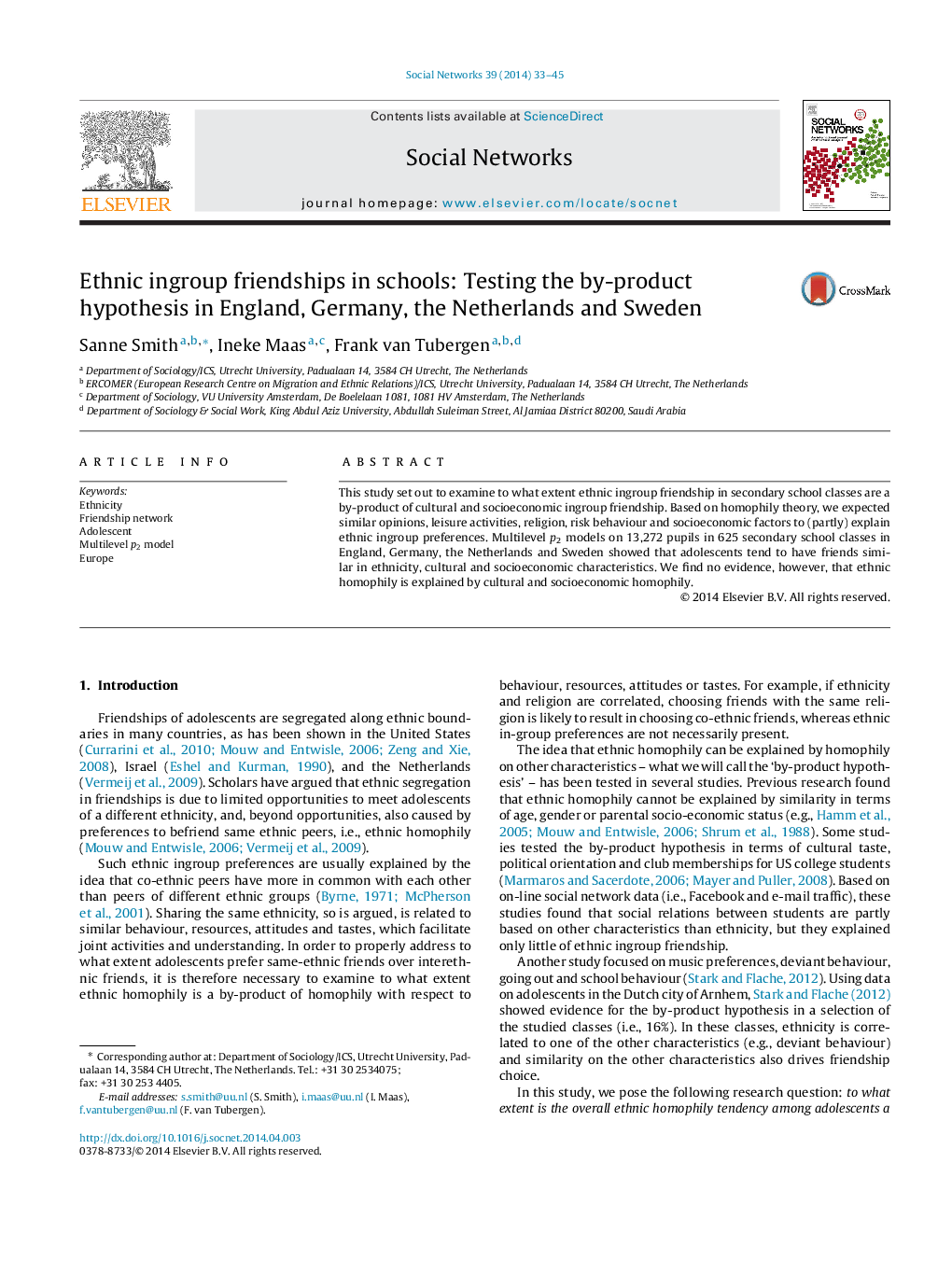| Article ID | Journal | Published Year | Pages | File Type |
|---|---|---|---|---|
| 1129190 | Social Networks | 2014 | 13 Pages |
•We examine 13,272 English, German, Dutch and Swedish pupils in 625 school classes.•Natives and several immigrant groups show ethnic homophily.•Pupils show homophily on cultural and socioeconomic characteristics.•Cultural and socioeconomic homophily do not explain ethnic homophily.
This study set out to examine to what extent ethnic ingroup friendship in secondary school classes are a by-product of cultural and socioeconomic ingroup friendship. Based on homophily theory, we expected similar opinions, leisure activities, religion, risk behaviour and socioeconomic factors to (partly) explain ethnic ingroup preferences. Multilevel p2 models on 13,272 pupils in 625 secondary school classes in England, Germany, the Netherlands and Sweden showed that adolescents tend to have friends similar in ethnicity, cultural and socioeconomic characteristics. We find no evidence, however, that ethnic homophily is explained by cultural and socioeconomic homophily.
